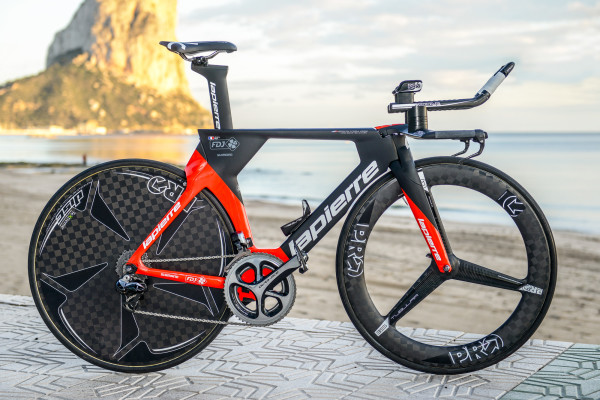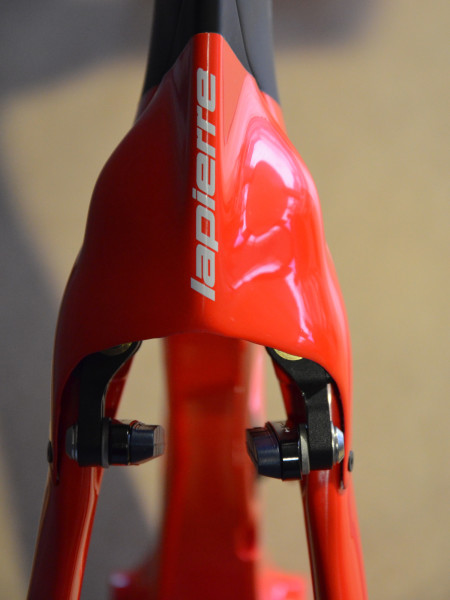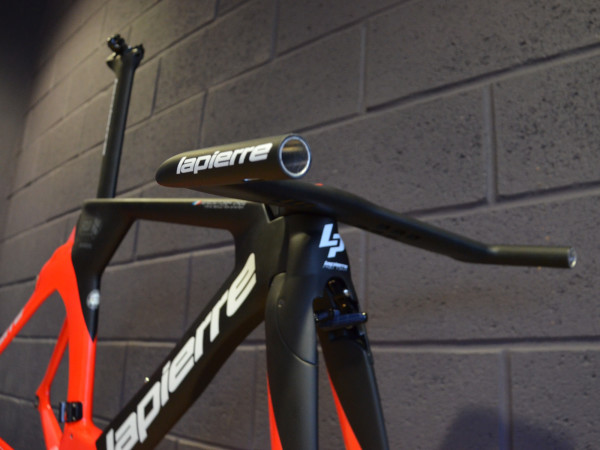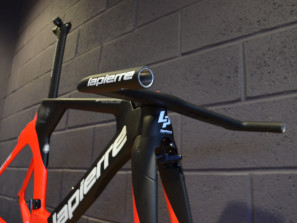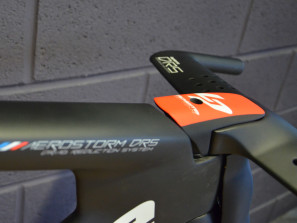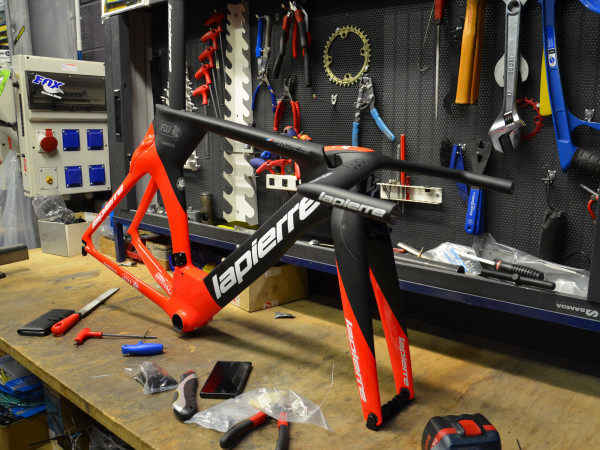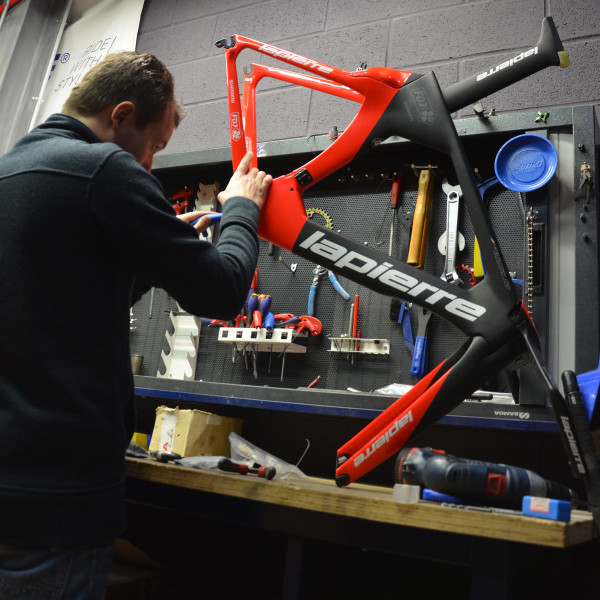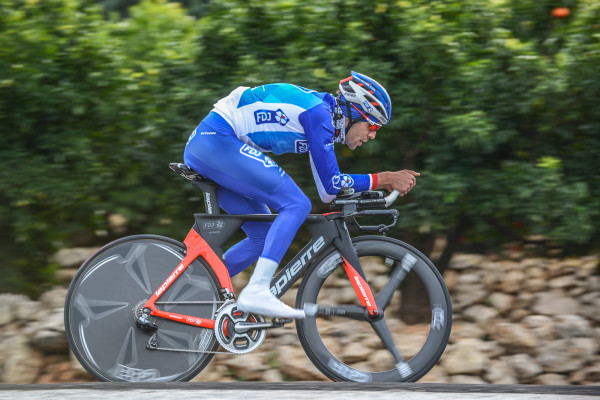Working together with long-term sponsored French pro team FDJ, Lapierre bikes has developed an all-new version of their Aerostorm DRS. Named for the Drag Reduction System, the bike has the singular goal of getting as fast as possible within the UCI regulations. We got a close-up look at the previous generation of the bike at last year’s Tour de France, and the new bike looks to take a big step forward in the integration game. Slip past the fold to get a closer look at how the bike gets faster, while also improving handling and braking…
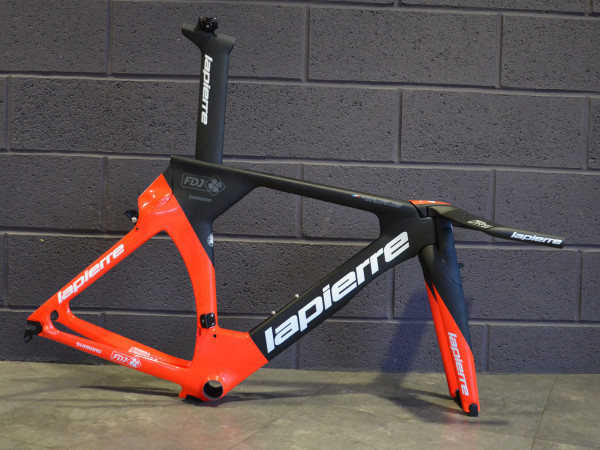
The new Aerostorm DRS gets a complete overhaul when it comes to geometry. The new bikes essentially get their frames sized-down, while growing toptube lengths across the board. They also get a steeper seat angle, but with better fore-aft adjustment through a rail-based seatpost (with 10cm of adjustment) in place of the previous two position offering. In the end the overall wheelbase grows a bit, while handling stays relatively stable and the fit becomes a bit more aggressive.
As to braking, the new bikes get custom-made center-pull brakes placed inside a cowled seatstay bridge and inside of the fork that actually improve braking efficiency and go a long way to boost aerodynamics. The rear brake tucks in against the stays with a small drag cover for a very low profile to the wind. The front on the other hand disappears into the fork with a seamless cover that also shields the front of the headtube effectively increasing its depth:width ratio for wind cheating abilities.
From an overall aero perspective the DRS setup carries over improved airfoil tubing shapes and a now-fully integrated cockpit. The frame, fork, stem, and handlebar now become effectively integrated, acting as one element against the wind, cutting drag down a good bit. Lapierre worked on optimizing the bike’s aerodynamics first in the computer, then both in the wind tunnel and out on the Roubaix velodrome with FDJ to fine tune its design.
The bike’s construction combines a mix of latex bladders and silicone mandrels to get all of those aero shapes and maximize its strength. Stiffness was a big goal of the bike, as the FDJ team was asking for better power transfer and predictable handling, so in the end the new frame boasts a 30% increase in rear-end stiffness. The complete bike weight also came down, making it one of the lighter TT bikes on the pro circuit, with FDJ’s version coming in at 8.1kg for their medium bikes.
The bike also gets some other hidden tech updates, like TDT (Trap Door Technology) that hides Di2 batteries low in the frame, and a seattube housing guide for easier routing.
Expect FDJ to race on the new bikes come the 1st of February at the Etoile de Besseges race, with consumer availability in Fall 2016.
